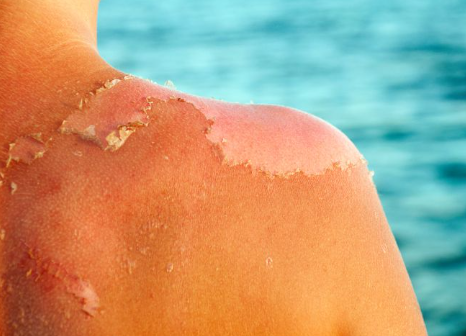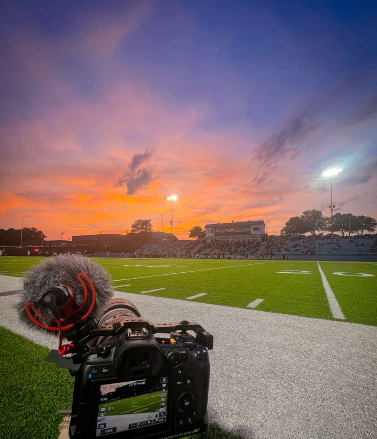Skin cancer: the most threatening consequence of not wearing sun protection. Painful burns, sun poisoning, and premature aging are some of the other repercussions one may face from unprotected sun exposure. Consistently wearing sunscreen will shield skin from the harmful UVA and UVB rays of sunshine.
The American Medical Association explains that UVA rays cause skin to age early, whereas UVB rays grant people with painful burns. While sunscreen does provide ample protection from the sun, people tend to not reapply within the suggested time on the container. There are a lot of factors to consider concerning the period of time to reapply sunscreen, such as the time of day, whether or not the person has been in the water, and the SPF level on the bottle.
The SPF level is inherently there to inform the amount of sun it filters out. In the AMA article, Dr. Pebbles describes that “an SPF of 15 is going to filter out 93% of the sun’s UVB rays,” whereas “an SPF of 30 is going to filter out about 97 percent of the sun’s UVB rays.” The higher the SPF, the more sun protection it provides. It’s important to stay as protected as possible from the sun’s dangers.
Even though it is the hottest, sunniest time of the year, summer isn’t the only season the sun can damage skin. Ms. Mounce, an English teacher at KHS and an avid sunscreen applier, mentions that she has gotten burnt in the winter before.
Mounce now applies sunscreen year-round and even has “built-in SPF” in her makeup. It’s a good idea to prevent sun damage every time you step outside, even if it seems ridiculous, because most harm from the sun creeps up when least expected.
“When I’m out at Busch Gardens and I’m standing in line for a long time, I seek out shadows. I’m just like standing in the shady parts of the lines… So yes, I’m a shade seeker,” Ms. Mounce explains.
Even just standing in the shade will do your skin a favor! The shade also gives your body a break from the heat and gives your stinky sweat a second to dry up.
While sunburns are the most common form of sun impairment, sun poisoning also poses a huge risk to basking in the sun without an ample amount of sunscreen. Ms. Mounce shares that she never suffered from sun poisoning, but one of her good friends did when they went river kayaking.
She, “being the very diligent sunblock user [she is],” applied plenty of sunscreen, while her friend did not; she wanted to get her tan on. “So she had her legs exposed in the kayak and then later that night, I felt fine, because I had applied and reapplied, and she had purple bruising, and like bubbles. It was nasty… and then she had chills at night. It messes with your body guys,” Ms. Mounce describes.
Always apply sunscreen! No one wants to end up as Ms. Mounce’s friend did. Sunburns are bad enough, but feeling sick and having purple bubbles on your skin on top of that is much worse. Trying to get a tan is not worth putting your health at risk.
Tanning is not good for the skin anyways. In the article from AMA, Dr. Kimball explains “what the tan tells you is that there have been lower levels of UV and that your skin’s protective melanin-producing cells have started to do that, but you’ve accumulated some damage in the process.”
Ms. Mounce suggests to “just embrace the paleness, guys. It’s 2024, you know what I mean. I’d like to think by moving in a direction of less body-shaming, I hope with that can come embracing all shades of skin color.”
Katie Segall, a sophomore at KHS and member of Sunni Sol comments that her group’s product is an “insulated, refillable, roll-on sunscreen applicator, so you can fill it up with your favorite sunscreen.”
Sunni Sol hopes “to make the application of sunscreen easier for kids. [They’re] hoping to help make moms’ lives easier when they go to the beach, that way they won’t have to chase their kids around to put sunscreen on them.” Sunni Sol pitched this product on pitch night at Kempsville High School.
Segall recommends “that if you’re at the beach around nine a.m. you don’t need to reapply [as frequently], but if you’re at the beach around twelve or one where it’s really high UV,” you probably SHOULD reapply every thirty to forty-five minutes.
Even if you reapply within the advised time period, you can still get burnt before, if you were in the water. This is due to the fact that water takes the sunscreen off from your skin, even if the bottle says it is “waterproof.” According to AMA no sunscreen is truly waterproof but rather water-resistant. The type of sunscreen you use is a factor in how long it lasts as well. Organic sunscreen doesn’t fully rub into the skin; it acts more as a protective layer on top of the skin. Whereas, non-organic sunscreen fully blends into your skin. Spray-on sunscreen has gotten better over the years, but cream sunscreen is easier to rub in since the bright white shows you what skin has already been covered.
Checking the expiration date on your sunscreen bottle is crucial to sun protection as well. Just like medicine, sunscreen has an expiration date, but that doesn’t make the product become harmful, it just becomes less effective.
Another thing to take note of is that even on cloudy days, your skin is not safe from the sun. It may appear that the sun is gone, but it’s still there, hiding and seeping through the clouds. Obviously getting burnt on a cloudy day is way less likely to happen than on a bright sunny day, but that doesn’t mean it’s impossible. The UVA rays can still sneak up and damage your skin as well, which won’t cause burns, but early aging.
“If you get burned really badly when you’re a kid, your chances for skin cancer increase more,” Katie Segall explains. Many people think that once their sunburn goes away they’re all good to go, that the sun damage just goes away once it’s healed. That’s not true though, the damage from the sun can never truly go away and poses a greater risk for skin cancer.
A sun protection article from Colorescience notes that “Repeated exposure to the sun can cause your skin to dry out, and when the UV rays interact with your skin cells, they can impact the appearance and growth of your body’s tissues.” Scarring can also occur from this repeated exposure.
The ears, neck, tops of feet, behind the knees, and the eyelids and under the eyes are the most overlooked areas when applying sunscreen! So don’t miss those places either!
“Gosh guys, wear sunscreen!” Ms. Mounce exclaims.
Ms. Mounce speaks from personal experience when talking about sun protection. She shared that she had skin cancer when she was twenty-seven. “I mean it was just superficial melanoma, but it was due to some exposure of the sun over a long period of time. So, it can get anybody,” she adds. Mounce explained that it wasn’t the most horrible experience since she just had to get surgery, but it certainly wasn’t fun for her. Skin cancer is no joke, that’s why it’s important to protect your skin from the sun.
Lastly, the sun can harm your immune system as well. After frequently being out and about in the sun with little to no sunscreen, the UV rays will gradually get to your body’s defenses. Without a strong immune system, the body is more susceptible to illness. With a weaker immune response, it would be harder for your body to fight off whatever is attacking it.
All things considered, keeping your body safe from the sun is essential. Many dangers come from doing otherwise, such as the typical sunburn, sun poisoning, premature aging, and even as far as skin cancer. The sun can sometimes slink up on you, so it’s advised to wear sunscreen everyday, even when it’s cloudy or in the winter when it seems unnecessary. And never forget to reapply!











